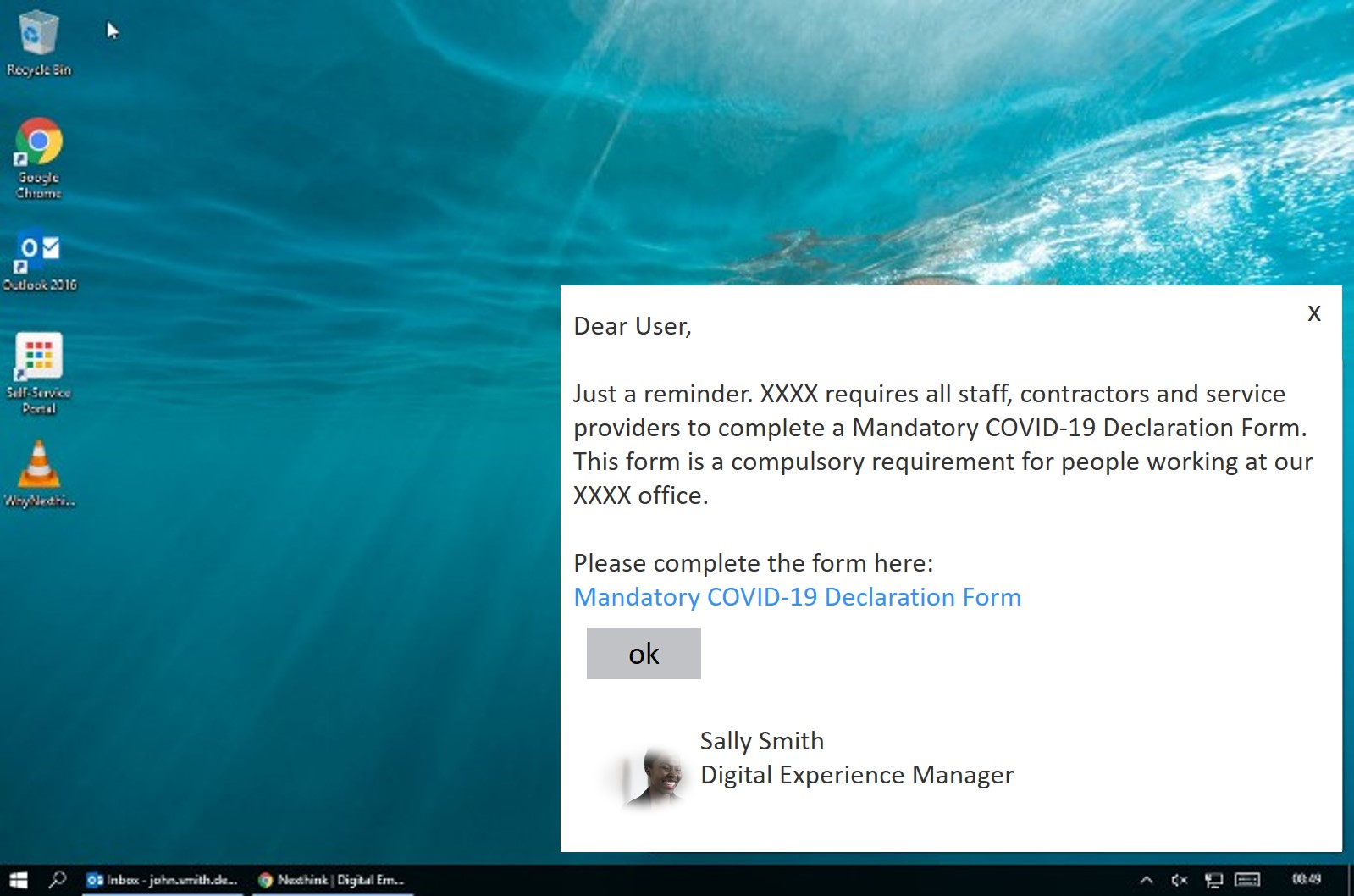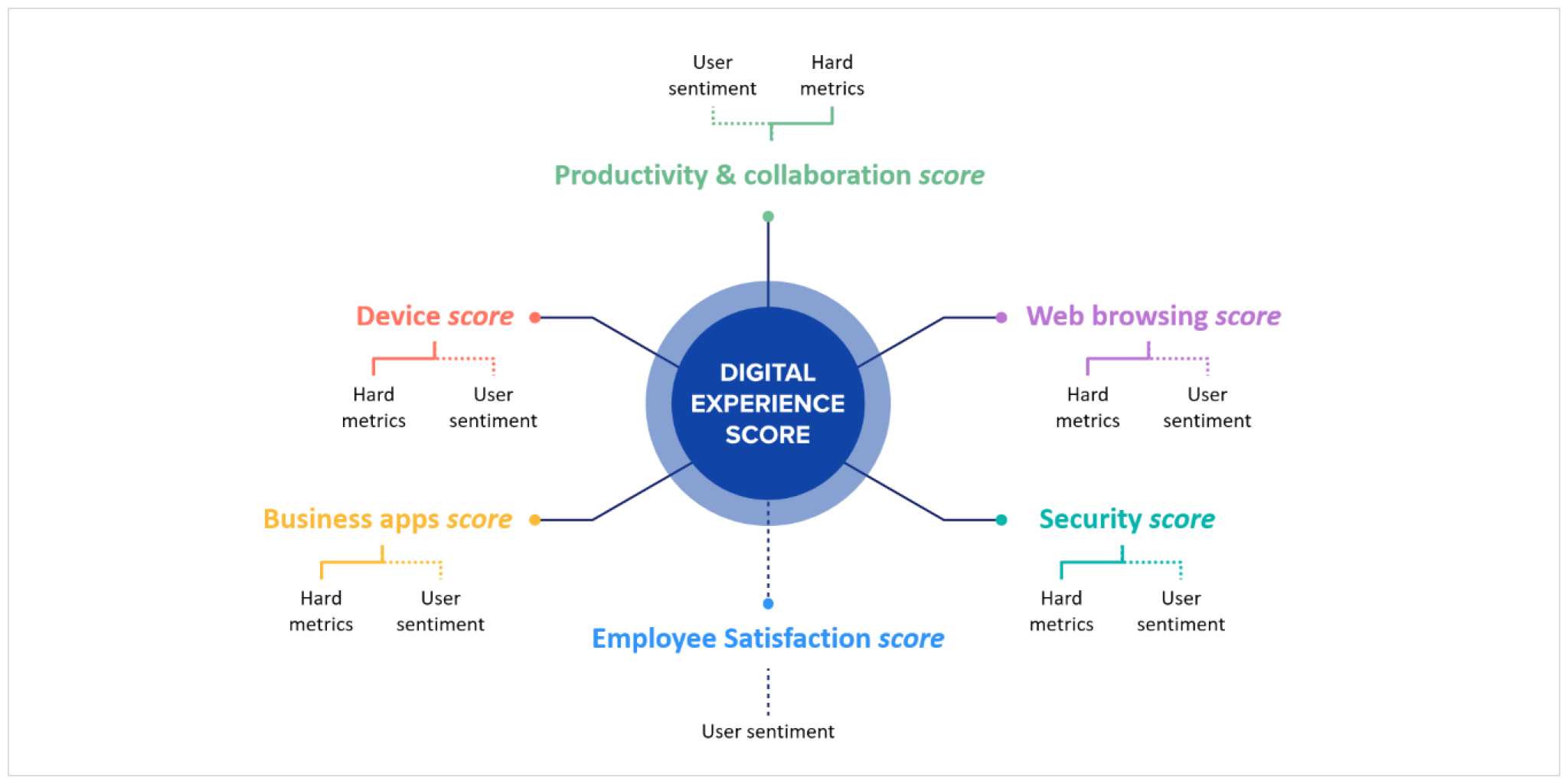Back to Work, How IT Can Reopen The Office
I have good, bad, and good news for you.
Let’s start with the first good news:
After three months of uncertainty, several countries are starting to reopen their economies and plan their way out of the pandemic. It appears there is finally some light at the end of the tunnel.
Following the same drumbeat, many business leaders right now (with the help of their IT & HR teams) are trying to assess the well-being of their remote workers and determine which of them can safely return to the office this summer.
The bad news?
For many, progress has been painfully slow because they lack both the technical reach and contextual tact to properly gauge their employees’ work experiences and earn their unique feedback.
And the second good news?
Luckily, several companies are using Nexthink’s patented technology right now to overcome these exact challenges and safely bring their remote workers back to the office.
Reclaiming a sense of normalcy
For example, one of our customers, a leading multinational gas company, is systemically cycling their remote workers back onsite thanks to our platform’s advanced targeting capabilities and digital experience scoring system.
Each week this company makes their employees complete COVID-19 health declaration forms to vet their well-being and availability to come onsite. After the employees complete their forms and are deemed fit, IT Ops sends them each a building access code and assigns them to one of three teams (red, blue, or yellow), with each team then allowed access to the building for a week at a time on a rotating basis.
“
We needed a way to cut right across to our employees and get them to respond. This tool helped us do just that and track feedback all in one spot.
End User Support Director
Multinational Gas Company
The company’s current strategy is to slowly phase all workers back into the office based on a combination of their local city’s COVID guidelines, their employees’ health declaration data and their digital experience (this last point is especially key, as explained at the end of this article).
But as many executive leaders are now realizing, just getting to a point where you can safely reopen is no easy task.
Why the “traditional” doesn’t work
In order to build a practical post-COVID strategy, you need reliable employee feedback and outreach.
Unfortunately, most IT & HR teams that are leading this effort are using ineffective, traditional tools like cell phones and email communications.
That approach will always be an uphill battle.
Phone calls or text messages sent to employees can easily be ignored, mistaken for spam, or interpreted as a breach in privacy. Honestly, what person wants their company’s IT or HR department periodically contacting them on their personal cell phone?
My guess is not many.
“
We tried collecting declaration forms using email campaigns but the results were abysmal.
L2 Support Manager
Multinational Gas Company
And email campaigns are equally as ineffective. Targeting is limited by the email exchange server, so any employee without an official address (e.g. sub-contractors) might be inadvertently excluded from a campaign. Also, emails can easily land in a spam folder and at best, average only 30-40% response rates.
In fact, before using our platform the IT Ops team at that multinational gas company sent an email campaign to their employees hoping to collect those COVID-19 health declaration forms, but the campaign failed miserably, receiving an open rate of just 22% and a response rate of 12%.
Hyper-focused targeting and powerful end user computing data
Turning to Nexthink’s platform, this customer’s IT Ops were able to quickly build a customized on-screen message with a url to the company’s declaration form.
With the message drafted, IT then quickly scaled their campaign across the company’s 4,257 devices. Two days later, 97% of the company’s employees responded and completed their declaration forms.

An example of a Nexthink campaign our customer sent to their remote workers
The success of the campaign came down to several factors:
- Nexthink’s on-screen messages are difficult to ignore. IT can set them to expire after several seconds or enable them to close only after the end user answers them.
- It’s easy to track the progress of a Nexthink campaign and see in real time how many users open and close these messages. This customer kept their messages active until the time the employee clicked “complete” on their declaration form.
- Targeting is flexible and scalable – IT Ops set an alert in the platform to automatically send the same campaign the next day to those remaining 3% of employees that didn’t complete their forms.
How IT can help forge a plan back to the office
Before offices can safely reopen, business executives need actionable data that they can pilot.
Collecting those health declaration forms was a solid first start, but our customer wanted to take their plan a step further. IT and HR teamed up to corroborate their employees’ declaration data with their digital employee experience scores.
Looking across six critical metrics, these scores showed a window into how their employees both perceived and experienced their current remote digital work environments.

The results were enlightening to say the least.
The team found that some of the company’s employees were happier and more productive working from home while others were the complete opposite.
In fact, our platform showed that roughly 30% of all company employees complained of a poor remote work experience for factors beyond IT’s control (for reasons like family distractions or uncomfortable work stations); and of this subgroup, every employee had declared themselves healthy and safe from COVID exposure.
Knowing that this subgroup was both eager and healthy enough to return to work, the two departments gave the company’s executive leaders a plausible plan to pilot the reopening of their office.
This is just one example of how our customers are using Nexthink to build a bridge back from their remote work environment.
If you’re looking for IT solutions that can help bring your remote workers onsite, contact us today.
Interested in seeing how our Remote Worker Experience library pack works?
Related posts:
- Your MS Teams Rollout Needs Specific Help—Not General Guidance
- What Your IT Chatbot Can Look Like Running on Full Power
- 8 Websites Every End-User Computing Professional Needs to be Visiting Daily
- Paul Hardy (ServiceNow): The Changing Role of IT